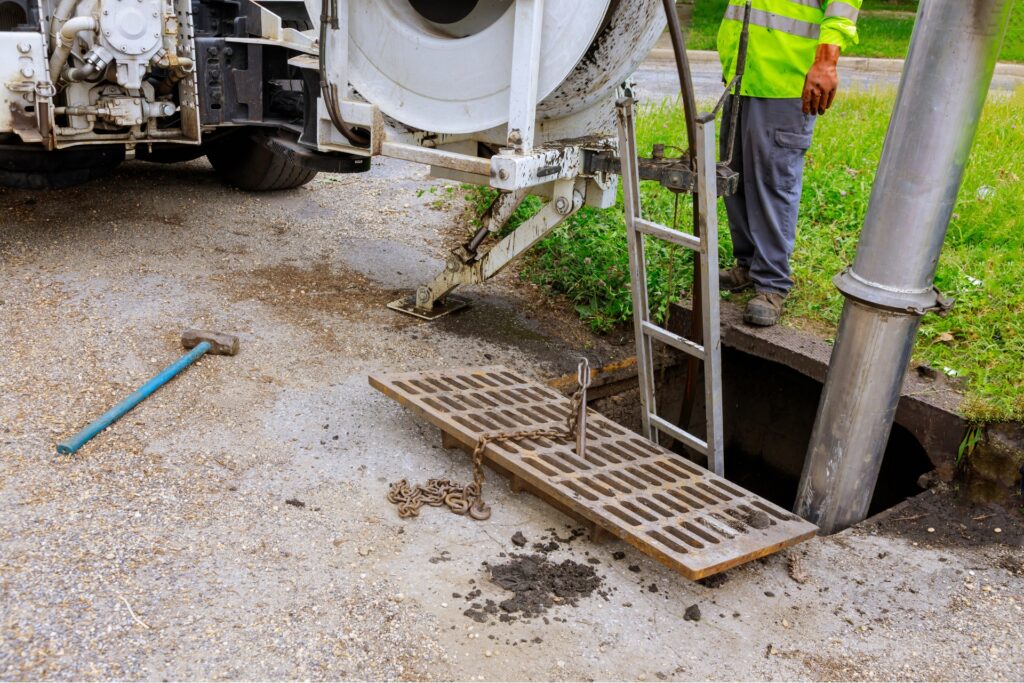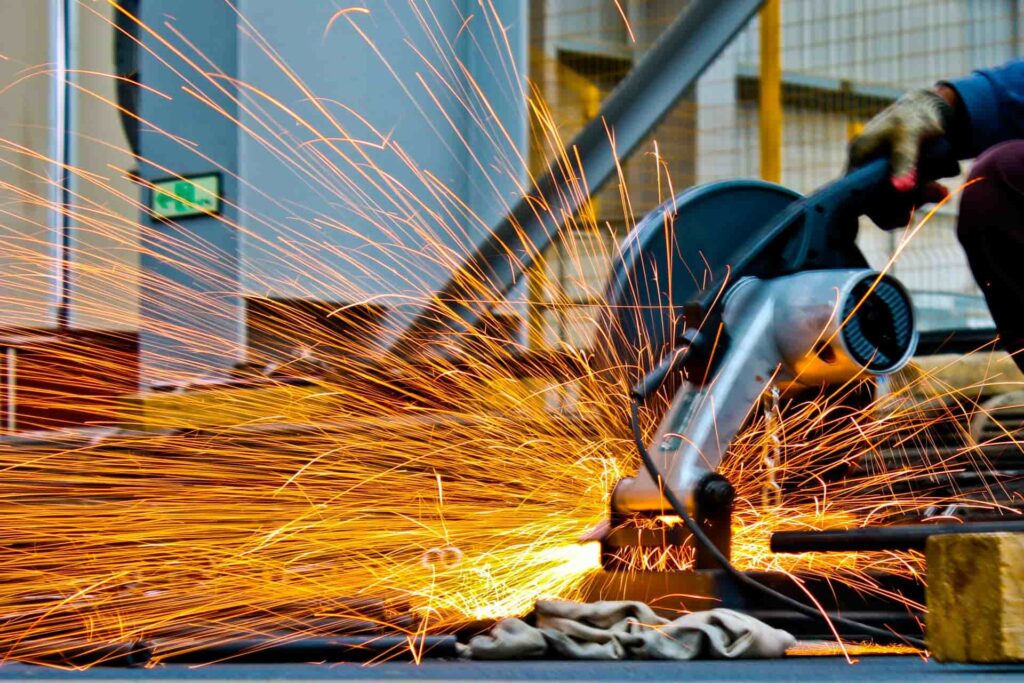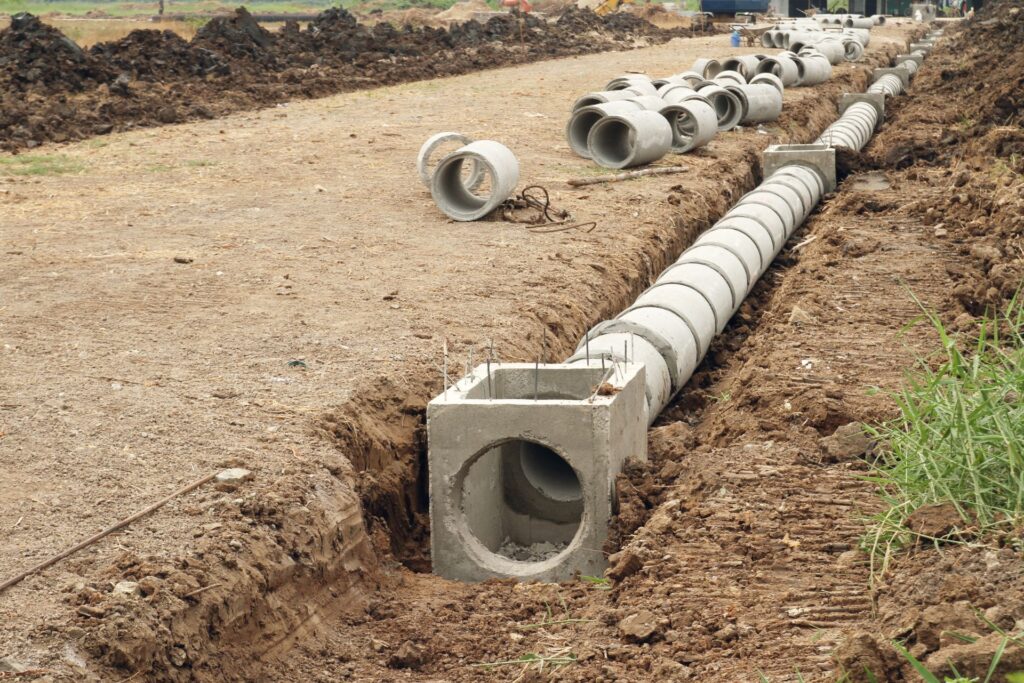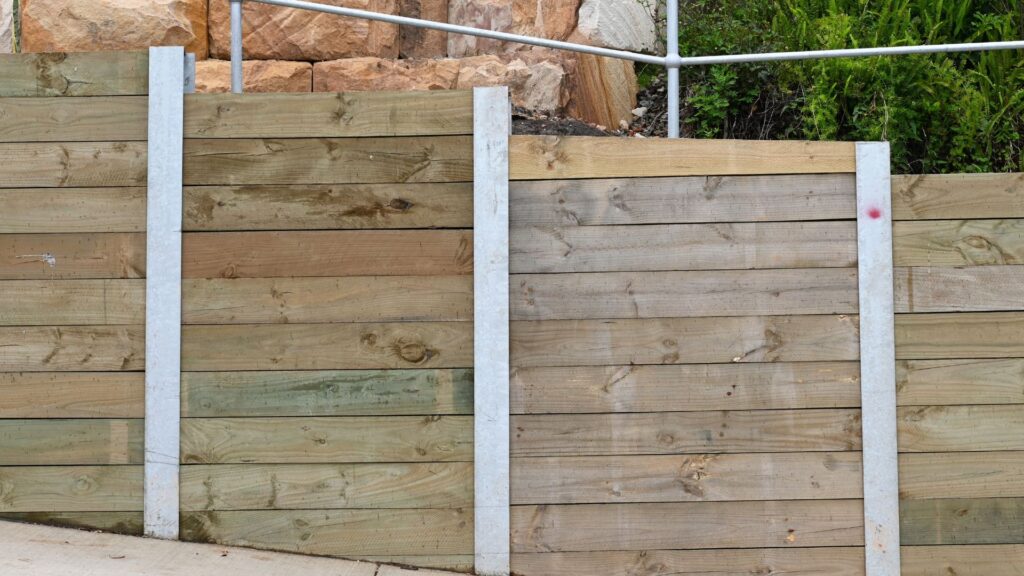Welcome to our comprehensive guide on understanding the difference between sewage and sewerage, two terms that are often confused but play crucial roles in our daily lives. If you’ve ever wondered why these words sound so similar yet refer to different aspects of wastewater management, you’re not alone. In New Zealand, where environmental concerns and public health are closely tied to how we manage waste, it’s important to know the distinction between the waste itself (sewage) and the systems that transport and treat it (sewerage). Whether you’re a homeowner, renter, or someone curious about how local infrastructure works, this guide will help you grasp these concepts, shedding light on their significance and the impact they have on the environment, public health, and the future of wastewater management in NZ. Let’s dive into this often-overlooked but essential topic.
The key difference between sewage and sewerage in New Zealand is that sewage refers to the waste (both liquid and solid) that comes from households, businesses, and industries, while sewerage is the system of pipes, drains, and treatment plants that transport and treat this waste. In essence, sewage is the waste material itself, and sewerage is the infrastructure that manages it.
Table of Contents
What Is Sewage
Sewage, also known as wastewater, refers to the combination of liquid and solid waste that is produced from households, businesses, and industries. It encompasses a variety of organic and inorganic materials that flow through our drains and sewers. Common sources of sewage include kitchen waste, such as leftover food and grease; toilet waste, which includes human excreta; and water used in activities like bathing, laundry, and cleaning. In essence, sewage is a byproduct of everyday activities in homes and commercial spaces, as well as industrial processes.
Sewage is typically composed of organic materials like human waste and food scraps, which can decompose naturally, as well as inorganic substances like detergents, chemicals, and plastics, which do not break down easily. Managing sewage properly is crucial to protect both the environment and public health.
Environmental Impact
When sewage is not treated effectively, it poses a significant risk to the environment. Untreated sewage can lead to the pollution of rivers, lakes, and oceans, harming wildlife and disrupting ecosystems. It can also contaminate drinking water sources, putting communities at risk of waterborne diseases. Furthermore, improper sewage management can contribute to the spread of illnesses, such as cholera, dysentery, and typhoid, particularly in areas with poor sanitation systems. Thus, the safe treatment and disposal of sewage are vital for maintaining clean water supplies and ensuring public health.
Sewage in New Zealand
In New Zealand, sewage management is critical in both urban and rural areas. Most urban centers have centralized sewage systems where wastewater is collected, treated, and safely discharged. Rural areas, on the other hand, may rely on septic tanks or other localized systems to handle their waste. Despite the infrastructure in place, individuals may encounter issues such as sewage overflows, especially during periods of heavy rainfall or system failures.
It’s also important to distinguish sewage from stormwater. While sewage is the waste from households and industries, stormwater refers to the rainwater runoff from streets and buildings. In many cases, stormwater is directed into natural waterways, while sewage is treated before being released. Managing both systems effectively helps ensure the health and sustainability of New Zealand’s environment.

What Is Sewerage
Sewerage refers to the complex infrastructure that plays a crucial role in managing and transporting sewage from homes, businesses, and industrial areas to treatment facilities. It includes not just the waste we discard, but more importantly, the network of pipes, drains, pump stations, and treatment plants responsible for safely moving and treating this waste. The purpose of a sewerage system is to ensure that wastewater is handled efficiently, protecting public health and the environment by preventing the contamination of water sources.
Contrary to common belief, sewerage is not the sewage (the waste itself), but rather the system designed to transport and treat that waste. This distinction is vital because sewerage infrastructure is a critical part of modern urban planning, providing a foundation for sanitation in cities and towns.
Examples of Sewerage Systems
Sewerage systems come in various forms depending on the needs of a specific area. Common components include pipes that transport sewage, pumping stations that help move the waste uphill, and treatment plants that process the sewage before it is safely released or repurposed.
There are also different types of sewerage systems. A combined sewer system, for instance, carries both stormwater runoff and sewage in the same pipes. While cost-efficient, these systems can become overwhelmed during heavy rainfall, leading to potential overflow issues. Separate sewer systems, on the other hand, handle sewage and stormwater independently, reducing the risk of overflows but requiring more infrastructure.
Sewerage in New Zealand
In New Zealand, sewerage systems are built to handle a diverse range of waste, from residential wastewater to industrial and stormwater runoff. The country’s infrastructure includes modern systems in urban areas, but aging infrastructure in some regions poses challenges. While New Zealand’s sewerage system generally meets international standards, the country is grappling with issues like aging pipes and rising environmental concerns, particularly around water pollution from stormwater overflows and wastewater leaks.
New Zealand is increasingly focusing on upgrading its infrastructure to manage these challenges, ensuring its sewerage systems are resilient against growing environmental pressures and capable of serving the population for years to come.

Key Differences Between Sewage And Sewerage
Understanding the difference between sewage and sewerage can sometimes be tricky, mainly because they sound so similar. However, these terms refer to very different things, and mixing them up can lead to confusion, especially when discussing important topics like infrastructure, environmental concerns, or public health.
Sewage refers to the waste itself; this includes human waste, household water from toilets, sinks, and drains, as well as industrial waste. In short, sewage is the dirty water and waste material that needs to be removed from homes and businesses.
On the other hand, sewerage is the system or network of pipes, tunnels, and treatment facilities designed to transport and treat that waste. It’s essentially the infrastructure that carries sewage from its source to treatment plants, where it is processed and cleaned before being safely released into the environment.
To help clarify the distinction, think of sewage as the passengers and sewerage as the vehicle. Just as a bus or train transports people from one place to another, the sewerage system moves sewage from homes and businesses to treatment facilities.
Understanding this distinction is crucial, especially when discussing the development of infrastructure or addressing environmental challenges. In New Zealand, for example, ensuring a well-functioning sewerage system is vital to prevent pollution of waterways and maintain public health. Miscommunication around these terms could lead to confusion in discussions about upgrading systems, handling environmental disasters, or managing public health issues.
By clearly differentiating between sewage and sewerage, we can more accurately address and manage these critical components of urban planning and public health.

The Importance Of A Well-Maintained Sewerage System
A well-maintained sewerage system is essential for safeguarding New Zealand’s environmental health, public safety, and resilience against climate change impacts. Proper management of wastewater ensures that the country’s natural beauty, especially its waterways and marine ecosystems, remains unspoiled and supports sustainable living.
Environmental Health
New Zealand’s pristine environment, renowned for its clean rivers and coastal waters, relies heavily on efficient sewerage systems. A well-maintained system prevents leaks and contamination that can harm aquatic life, affect water quality, and ultimately disrupt ecosystems. For instance, leaks from broken pipes can introduce harmful bacteria, nutrients, and chemicals into waterways, leading to algal blooms that suffocate marine life. Contamination of drinking water sources is another critical risk, as it threatens both wildlife and human health. Environmental disasters, such as those caused by outdated or poorly maintained sewerage systems, can have long-lasting consequences on the natural habitats New Zealanders cherish.
Public Health
Failing or outdated sewerage systems pose a serious public health risk. When wastewater systems overflow, untreated sewage can flow into streets, homes, and recreational areas, exposing people to waterborne diseases like giardiasis, norovirus, and campylobacter. In New Zealand, outbreaks of such illnesses have occurred when water supplies were contaminated by wastewater. For example, the 2016 Havelock North water contamination crisis led to widespread illness after drinking water was tainted by sewage runoff. This event highlights the critical importance of investing in modern sewerage infrastructure to prevent future public health disasters.
Climate Change Impact
Globally, climate change is placing added pressure on aging sewerage systems, and New Zealand is not immune to these effects. Rising sea levels, more intense and frequent rainstorms, and coastal erosion are all challenges that threaten to overwhelm older wastewater systems. In regions prone to flooding, heavy rainfall can exceed the capacity of stormwater and sewerage systems, causing sewage overflows. As these climate impacts intensify, maintaining and upgrading sewerage infrastructure becomes vital to protect both human health and the environment.
Urban vs. Rural Differences
Sewerage systems vary significantly between urban and rural areas in New Zealand. In major urban centers like Auckland and Wellington, centralized sewerage systems handle large volumes of wastewater efficiently. However, rural areas often rely on septic systems, which require regular maintenance to function properly. The challenges faced by rural areas, where decentralized systems predominate, can differ greatly from those in cities. Septic systems, if not well maintained, can leak, contaminating local water sources, posing unique risks to smaller communities.
A well-maintained sewerage system is crucial for environmental protection, public health, and resilience against climate change. Addressing these challenges now will ensure a healthier, more sustainable future for all New Zealanders.

Sewerage System Challenges In New Zealand
New Zealand’s sewerage systems face significant challenges, primarily due to aging infrastructure, funding hurdles, and the need for sustainable solutions. With urban populations growing and environmental concerns increasing, these issues have become a pressing topic in many communities across the country.
Aging Infrastructure
Many of New Zealand’s major cities rely on sewerage systems that are decades old, which struggle to cope with modern demands. These aging networks were not designed to handle the increased pressure from expanding urban populations, changes in land use, or the impacts of climate change, such as more frequent flooding. For example, cities like Auckland and Wellington are grappling with outdated sewerage pipes, which frequently fail, leading to blockages, overflows, and environmental contamination.
Funding and Upgrades
The cost of maintaining and upgrading New Zealand’s sewerage systems is substantial. Local councils and the government face tough decisions about allocating funds for these critical infrastructure improvements. A recent example is the $761 million investment announced by the New Zealand government for water infrastructure improvements, which includes sewerage system upgrades across the country. However, securing adequate funding to meet the growing needs of both urban and rural areas remains a challenge.
Water Pollution Concerns
Poorly managed sewerage systems have led to several water pollution incidents in New Zealand. One notable case is the contamination of Auckland’s beaches and nearby waterways due to sewer overflows during heavy rainstorms. These events have sparked public outrage, leading to demands for stricter regulations and faster action to improve water quality. Policy changes, such as the government’s Three Waters Reform, aim to address these issues by centralizing water, stormwater, and wastewater management to enhance efficiency and accountability.
Sustainability Efforts
New Zealand is also working toward making its wastewater management systems more sustainable. Green technology, such as energy-efficient treatment plants, and initiatives like water recycling, are becoming more common. These efforts are not only aimed at reducing the environmental footprint of wastewater management but also at ensuring the resilience of these systems in the face of climate change and growing populations.

Essential Plumbing Care And Maintenance
Caring for your home’s plumbing system is crucial to avoid costly repairs and ensure smooth operation. Whether you’re a homeowner or renter, these practical tips can help reduce stress on your sewage system and keep everything flowing smoothly.
How to Care for Your Plumbing
To prevent blockages and other plumbing issues, it’s essential to be mindful of what you put down your drains. Avoid pouring fats, oils, and grease (FOG) into sinks, as they can solidify in pipes, leading to clogs. Instead, collect FOG in a separate container and dispose of it in the trash. Additionally, avoid flushing non-degradable items such as wipes, even if they are labeled flushable. These products don’t break down easily and can cause significant backups in your sewage system.Installing drain screens can also help catch hair and debris before they enter your pipes. Regularly clean these screens to keep the flow of water unobstructed.
Recognizing Sewerage Issues
Understanding the early signs of sewer problems can help you address issues before they escalate. Common indicators of a sewage system problem include slow-draining sinks or toilets, frequent backups, and foul odors coming from your drains. Gurgling sounds from your pipes can also be a sign of trouble. If you notice any of these signs, it’s crucial to act quickly.
What to Do in Case of a Sewerage Problem
If you suspect a problem with your home’s sewer connection, contact your local council or municipality to ensure there are no broader issues in the area. If the problem persists, it’s time to seek professional help. A licensed plumber can assess the situation and recommend the best course of action, potentially saving you from more expensive repairs down the line.
Septic System Maintenance
For rural homeowners with septic systems, regular maintenance is key to avoiding environmental damage and costly repairs. Have your septic tank inspected every 3 to 5 years and pumped as needed to prevent overflow. Avoid using harsh chemicals that can disrupt the bacteria in the tank, as these are essential for breaking down waste. Proper septic system care not only protects your property but also helps safeguard the surrounding environment. By following these plumbing care tips, you can help ensure a long-lasting, efficient sewage system while minimizing potential damage to your home and the environment.

The Future Of Sewerage And Wastewater Management In New Zealand
As New Zealand faces increasing environmental challenges, the future of sewerage and wastewater management is more critical than ever. The focus is on sustainable solutions, government-driven reforms, and citizen participation to ensure a cleaner, more efficient system for all. Here’s a detailed look at what the future holds for wastewater management in New Zealand.
Sustainable Solutions
New Zealand is embracing cutting-edge technologies and eco-friendly practices to tackle the growing demand for efficient wastewater management. A significant trend is the development of renewable energy-powered treatment plants. These plants utilize energy sources like solar, wind, or biogas to power the processes that treat wastewater, reducing reliance on non-renewable resources and lowering carbon emissions.
Another key innovation is water recycling, which is set to play an integral role in the future of wastewater management. By treating and reusing wastewater, New Zealand can conserve its freshwater resources and reduce the environmental impact of discharging treated water back into natural waterways. This practice, already gaining traction globally, could be scaled up across the country, especially in areas facing water shortages.
Moreover, smart sewer systems represent an exciting development. These systems use sensors and automation to monitor water quality, detect leaks, and optimize operations in real-time. This technology not only increases efficiency but also ensures rapid responses to potential environmental hazards, ultimately improving the safety and reliability of sewerage systems.
Government Plans
The New Zealand government is taking proactive steps to modernize wastewater infrastructure across the country, with significant emphasis on sustainability and long-term resilience. One of the key initiatives is the Three Waters Reform Program, which aims to overhaul the management of drinking water, wastewater, and stormwater services. This reform seeks to address long-standing issues like aging infrastructure, population growth pressures, and the impacts of climate change.
The Three Waters Reform is focused on creating larger, more financially sustainable entities to manage water services, ensuring that infrastructure is upgraded and maintained to higher standards. This approach is designed to provide consistent, safe, and affordable services across the country, while also safeguarding New Zealand’s waterways and marine environments.
In addition to the Three Waters Reform, other national policies are in development to support future wastewater management. These include plans for enhancing wastewater treatment facilities, improving stormwater systems to reduce pollution during heavy rainfall, and promoting innovation in wastewater technology. The government is also exploring ways to incentivize the adoption of greener technologies, such as energy-efficient treatment plants and advanced recycling systems.
Citizen Participation
While technological advancements and government policies are crucial, the role of everyday citizens in shaping the future of wastewater management cannot be overstated. Public involvement is vital to the success of infrastructure projects and environmental initiatives. By understanding how local sewerage systems work and advocating for sustainable practices, New Zealanders can make a meaningful contribution to their communities and the environment.
Citizens can take an active role by attending public consultations on infrastructure projects, such as upgrades to treatment plants or the implementation of new technologies. These consultations offer an opportunity to voice concerns, ask questions, and provide input on how local systems are managed. Engaging with local councils and authorities also helps ensure that decisions reflect the needs and priorities of the community.
Furthermore, promoting water conservation practices at home, such as reducing water use and properly disposing of household waste, can significantly reduce the strain on wastewater systems. Advocacy for better infrastructure, including the adoption of renewable energy solutions and water recycling technologies, is another way citizens can influence the future of wastewater management.
The future of sewerage and wastewater management in New Zealand is bright, with sustainable solutions, robust government plans, and active citizen participation paving the way forward. Renewable energy-powered treatment plants, water recycling, and smart sewer systems will play pivotal roles in reducing environmental impact and improving efficiency. Government initiatives like the Three Waters Reform are laying the groundwork for modern, resilient infrastructure that can meet the challenges of the future. By staying informed and involved, every New Zealander has the power to help shape a cleaner, greener future for the country. Sustainable wastewater management isn’t just a government responsibility, it’s something that involves everyone.

fAQs: About Difference Between Sewage Vs Sewerage NZ
What is the main difference between sewage and sewerage?
Sewage refers to the waste matter (both liquid and solid) that flows out of homes, businesses, and industries. It includes everything from toilet waste to greywater from sinks and showers. Sewerage, on the other hand, is the infrastructure of the network of pipes, drains, and treatment plants used to transport and treat that waste. Essentially, sewage is the waste, and sewerage is the system that manages it.
Why is it important to know the difference between sewage and sewerage?
Understanding the difference is crucial because these terms refer to very different things. Confusing them can lead to misunderstandings about how waste is managed, the role of local councils, and the steps individuals can take to prevent problems in their homes. Additionally, knowing the distinction helps when discussing environmental and infrastructure issues in New Zealand.
How does sewage get treated in New Zealand?
In New Zealand, sewage is transported via the sewerage system to wastewater treatment plants. Here, it undergoes various processes to remove harmful bacteria, chemicals, and solid waste before the treated water is safely released into the environment. The exact treatment methods vary depending on the region and the capacity of the local system.
Are sewerage systems in New Zealand well maintained?
New Zealand’s sewerage systems are generally well-maintained, but there are challenges, particularly in urban areas with aging infrastructure. Some cities, like Auckland, are facing pressure due to growing populations, and rural areas might have septic systems instead of centralized sewerage. The government is continuously working on improving and updating the infrastructure through initiatives like the Three Waters Reform Program.
What happens if sewage isn’t managed properly?
When sewage isn’t properly managed, it can lead to environmental and public health issues. Untreated sewage can contaminate water bodies, lead to pollution, and cause diseases. In New Zealand, heavy rainfall sometimes causes sewerage systems to overflow, resulting in raw sewage entering rivers or beaches, which can lead to temporary closures and health advisories.
How can homeowners help maintain the sewerage system?
Homeowners can help maintain the sewerage system by being mindful of what they flush down the toilet or pour down the drain. Avoid flushing wipes, diapers, or other non-biodegradable items, and don’t pour fats, oils, and grease down the sink. Regularly maintaining your plumbing and ensuring your home’s connection to the sewerage system is functioning properly also helps prevent blockages and backups.
What are the common signs of a sewerage issue at home?
Common signs of sewerage issues include slow-draining sinks or toilets, frequent backups, gurgling sounds in the pipes, and unpleasant odors near drains. If you notice these signs, it could indicate a blockage or a problem with your connection to the sewerage system, and it’s important to contact a professional for an inspection.
How does New Zealand’s sewerage system handle stormwater?
In many areas of New Zealand, the sewerage system is separate from the stormwater system, meaning rainwater is directed to different pipes that lead to rivers, streams, or the ocean. However, some older systems have combined sewer and stormwater pipes. During heavy rain, these systems can overflow, causing untreated sewage to enter waterways.
What role does the New Zealand government play in sewerage management?
The New Zealand government plays a key role in regulating and managing sewerage infrastructure through local councils and national initiatives like the Three Waters Reform Program. This program aims to improve the management of drinking water, wastewater, and stormwater infrastructure across the country to ensure it remains safe, sustainable, and environmentally friendly.
What is the future of sewerage systems in New Zealand?
The future of sewerage systems in New Zealand involves upgrading existing infrastructure to handle growing populations and environmental challenges, such as climate change. There’s also a push for more sustainable practices, such as water recycling and green technologies in wastewater treatment plants. The government is investing in long-term improvements to ensure the system can adapt to modern needs.
Conclusion
Understanding the distinction between sewage and sewerage is crucial for all New Zealanders. Sewage refers to the waste itself primarily human waste and water while sewerage is the system responsible for transporting and processing that waste. This distinction is important not just for understanding how our infrastructure works, but also for ensuring that we’re addressing the right issues when it comes to maintaining our waterways and protecting public health. By grasping this difference, we become better equipped to take responsibility for how we treat wastewater in our own homes and communities. It’s important to be mindful of the ways we interact with our sewerage systems, ensuring they remain in good working order and preventing unnecessary blockages or breakdowns. Educating others on the importance of a well-maintained sewerage system also plays a role in safeguarding New Zealand’s environment and the well-being of its citizens. In the end, the health of New Zealand’s waterways and communities depends on everyone doing their part. Whether it’s reducing waste, maintaining personal plumbing systems, or advocating for improvements in local infrastructure, each step contributes to a cleaner, more sustainable future for the country.
About the Author:
Mike Veail is a recognized digital marketing expert with over 6 years of experience in helping tradespeople and small businesses thrive online. A former quantity surveyor, Mike combines deep industry knowledge with hands-on expertise in SEO and Google Ads. His marketing strategies are tailored to the specific needs of the trades sector, helping businesses increase visibility and generate more leads through proven, ethical methods.
Mike has successfully partnered with numerous companies, establishing a track record of delivering measurable results. His work has been featured across various platforms that showcase his expertise in lead generation and online marketing for the trades sector.
Learn more about Mike's experience and services at https://theleadguy.online or follow him on social media:

















